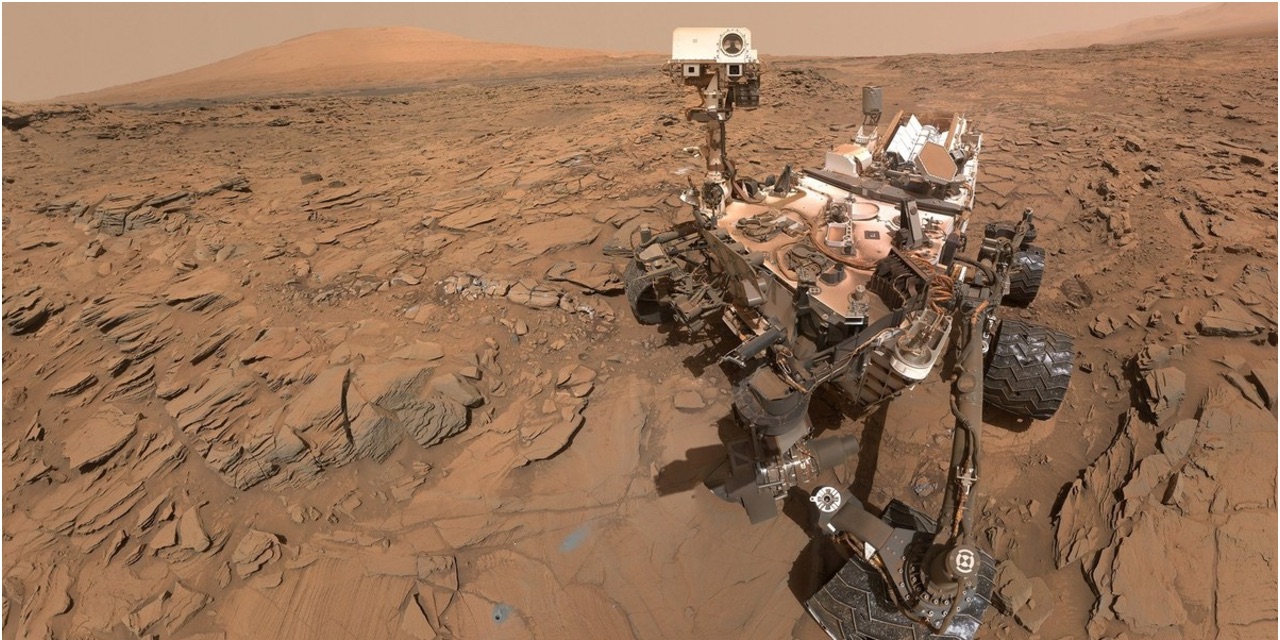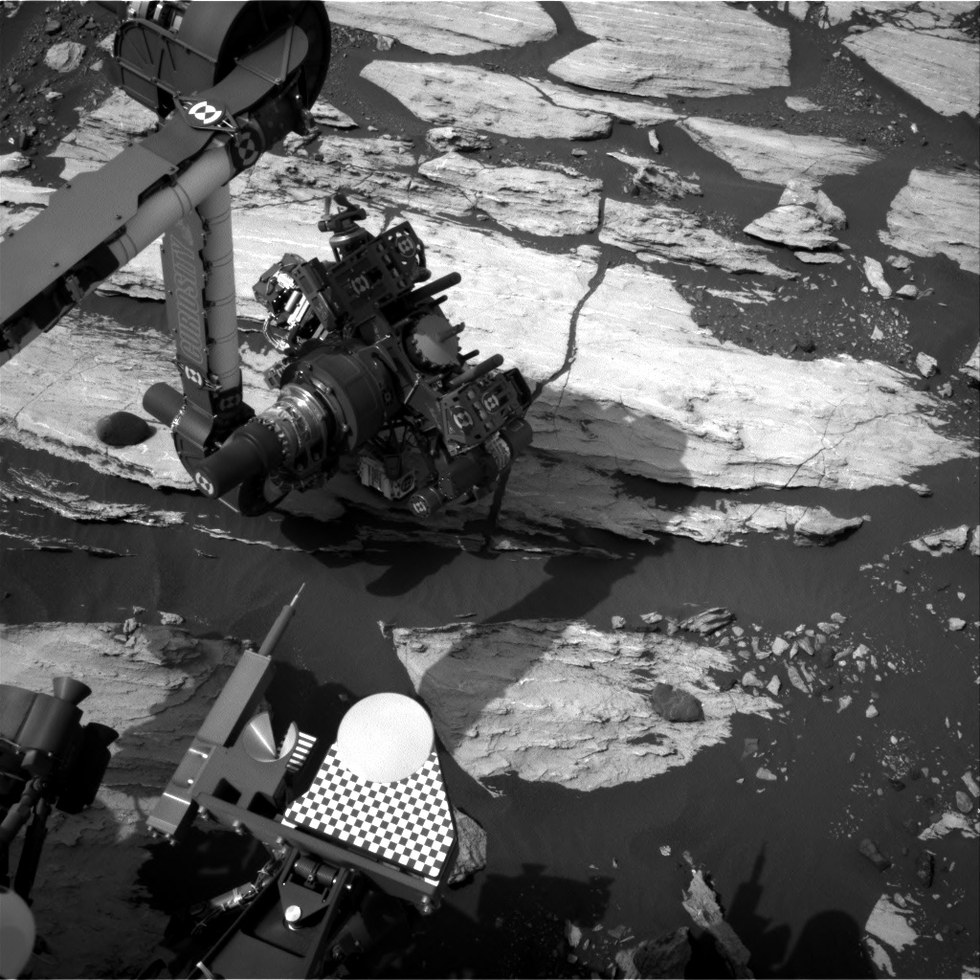Mars Rover Curiosity's Drill Malfunction Puts Organics Hunt at Risk

Scientists hoping for a more detailed look at organic material on Mars — possibly including molecules relevant to life — are patiently awaiting an act of engineering genius from NASA.
Since December, the team in charge of NASA's Mars rover Curiosity has been working to resolve a problem with the robot's drill, an essential tool for obtaining powered samples from inside Martian bedrock for chemical analysis.
Such sample analysis already has shown that Mars once had ingredients and habitats suitable for microbial life. Curiosity also has found chlorinated organics, though their origins remain unknown.
The rover contains a key follow-up experiment that uses a chemical solvent to tease out more details about the organics, including those with potential biological relevance, such as fatty acids, amino acids, amines and possibly even nucleobases.
RELATED: Curiosity's Mars Drill Is Jammed
"Perhaps the most robust molecules that might be relevant to life are the lipids or fatty acids that are the chemical constituents of cell membranes," NASA's Paul Mahaffy, lead scientist for Curiosity's multi-purpose Sample Analysis at Mars, or SAM, experiment told Seeker.
"These are among the most robust and best preserved molecular biosignatures sometimes found in ancient terrestrial rocks," Mahaffy added.
Breaking space news, the latest updates on rocket launches, skywatching events and more!
It took time for engineers to work out the details and write the software for Curiosity to quickly deposit rock powder into a wet chemistry cup. Once the cup's foil seal is broken, the solvent immediately starts evaporating.
"You want to drop the sample in as quickly as possible and get the experiment going," Curiosity project scientist Ashwin Vasavada told Seeker. "If the organics are there, it allows us to see a whole class of organic molecules that we have not yet seen on the mission."
With just nine wet chemistry cups aboard the rover, scientists decided to wait until Curiosity could drill into clay-rich rocks at the base of Mount Sharp, a three-mile high mound of sediment that rises from the floor of the rover's Gale Crater landing site.
RELATED: NASA's Mars Rover Curiosity Still Dogged by Drill Malfunction
The team was preparing for the wet chemistry experiment's first run when the rover's drill broke. Engineers have traced the problem to a stuck brake deep inside the motor.
"The problem with the drill feed hit us at a really unfortunate time," Vasavada said. "We wanted to be sure we could do this experiment before we left the Murray Formation — the basal layer of Mount Sharp — where we know that we've seen organic signatures in the rocks.
"That seemed like a prudent thing… to try this experiment out before we left the area where we've seen organics. We don't know whether to expect them or not higher up on the mountain. We know we've seen them here," Vasavada said.
The rover, which is slowly ascending the mountain, is about two-thirds of the way through the Murray Formation. Curiosity is expected to move beyond the region this year.
"Rather than stop the mission and wait for all these problems to get solved, the team decided to keep marching steadily up the mountain because of the larger mission goals," Vasavada said.
Engineers are trying to figure out an alternative way to release the drill brake. If that fails, the team will begin to look at designing an alternative algorithm for drilling.
RELATED: Curiosity Kicks Off Next Mars Odyssey With a Selfie
"Ideally we don't want to touch [the algorithm] because it took a few years to develop. One solution might be to write some extra code for the rover to detect when the drill stalls, determine if it's OK, try whatever steps we come up with that have a chance of working. And if it could disengage the brake then keep on drilling. These solutions would take several months to achieve," Vasavada said.
Meanwhile, Curiosity may come across some loose sand of interest to scientists and use its arm's scoop to deliver samples into SAM for a wet chemistry run.
"The scoop might limit our ability to get to some of the more interesting samples however," Mahaffy said.
Scientists remain hopeful that one way or another Curiosity will get its new taste of Mars.
"I'm expecting our talented engineering team supporting the Curiosity rover will come up with a creative solution," Mahaffy said.
WATCH VIDEO: How We Know Europe's Mars Lander Crashed
Originally published on Seeker.

Irene Klotz is a founding member and long-time contributor to Space.com. She concurrently spent 25 years as a wire service reporter and freelance writer, specializing in space exploration, planetary science, astronomy and the search for life beyond Earth. A graduate of Northwestern University, Irene currently serves as Space Editor for Aviation Week & Space Technology.

